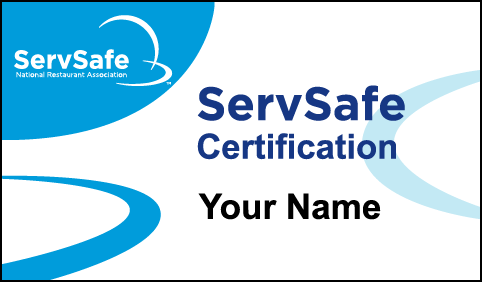Why Investing in ServSafe Certifications Can Propel Your Food Service Profession Forward
Why Investing in ServSafe Certifications Can Propel Your Food Service Profession Forward
Blog Article
Comprehensive Food Handlers Educating for Health and Safety
In today's rapidly progressing food solution landscape, extensive food handlers training has become an essential component for making sure health and safety. By instilling important practices associated with hand health, food storage, and cleanliness, this training not only mitigates the risk of foodborne illnesses but additionally reinforces conformity with governing standards. The ramifications of such training extend past plain conformity; they touch upon public wellness and customer depend on. Yet, the effectiveness of these training programs can vary dramatically. What variables truly identify their success in fostering a culture of safety?
Significance of Food Safety Training

Additionally, food safety training assists to make sure that workers are aware of current policies and guidelines, which are important for maintaining functional licenses and avoiding pricey fines. Routine training sessions additionally act as a platform for reinforcing finest methods, consequently decreasing the chance of human mistake, which commonly acts as a leading reason for food contamination.
Additionally, purchasing food security training can enhance an establishment's track record, as clients increasingly prioritize eating experiences that reflect high safety and security criteria. Such aggressive measures not just safeguard customers yet likewise add to the lasting success of food companies. In recap, thorough food safety training is an important aspect of food solution procedures, directly impacting both public wellness and company sustainability.
Trick Principles of Hygiene
Maintaining high requirements of hygiene is vital in any type of food managing setting to prevent contamination and guarantee the safety of consumers. The key concepts of health incorporate numerous vital practices that food handlers must consistently use.
First, hand hygiene is vital; food handlers should wash their hands extensively with soap and water prior to and after handling food, as well as after using the bathroom or touching any type of possibly contaminated surface areas. Equipment and surfaces should be routinely cleansed and disinfected to eliminate virus. This includes tools, reducing boards, and counter tops, which should be preserved in a tidy condition.


Appropriate food storage space is also essential; raw foods must be kept individually from cooked or ready-to-eat products to prevent cross-contamination. servsafe. Furthermore, maintaining appropriate temperature controls is critical; disposable products must be kept at risk-free temperatures to prevent bacterial development
Lastly, individual health can not be forgotten. Food handlers must wear clean garments, use hair restrictions, and avoid working when ill. By adhering to these vital concepts of health, food trainers can considerably reduce the risk of foodborne ailments and promote a much safer dining experience for all consumers.
Typical Foodborne Ailments
Although numerous foodborne diseases can be protected against through appropriate hygiene and safe food dealing with techniques, they continue to be a considerable public wellness concern. Foodborne microorganisms can result in a variety of diseases, ranging from light stomach distress to extreme complications and even death.
Common foodborne diseases include salmonellosis, triggered by Salmonella microorganisms, often linked to visit this website undercooked fowl and eggs. One more common ailment is listeriosis, connected with raw dairy products and ready-to-eat meats, which can be particularly dangerous for immunocompromised people and expecting females. Norovirus, regularly gotten from infected food or surfaces, is known for its rapid spread and capability to cause outbreaks in communal setups.
Escherichia coli (E. coli) infection, especially connected with undercooked ground beef and contaminated produce, can bring about extreme stomach aches and kidney failure sometimes. Furthermore, Clostridium perfringens, typically located in large amounts of food that are poorly kept, can create food poisoning with symptoms showing up shortly after usage.
Comprehending these diseases is essential for food trainers, as recognition can dramatically minimize the risk of contamination and shield public health. Correct education and training are crucial components in combating foodborne conditions.
Best Practices for Food Handling
Reliable food taking care of techniques are crucial in stopping the spread of foodborne illnesses. First of all, correct hand hygiene is important; food trainers have to wash their hands thoroughly with soap and water before and after managing food, especially raw meat or chicken - servsafe food handler. This straightforward action dramatically lowers the threat of cross-contamination
Second of all, maintaining suitable food storage space temperatures is essential. On a regular basis disinfect kitchen counters, reducing boards, and utensils, particularly after preparing raw foods. Use separate cutting boards for raw and ready-to-eat foods to additionally lessen contamination threats.
Additionally, when read review preparing food, it is essential to comply with the principle of "very first in, initially out" (FIFO) to manage inventory effectively and lower putridity. Constantly check out and adhere to food product labels for risk-free cooking temperatures and handling instructions. By carrying out these finest methods, food trainers can significantly improve food safety and protect public health and wellness.
Carrying Out a Security Culture
Producing a safety and security society within a food dealing with environment is crucial for fostering a dedication to food security among all personnel participants. This culture stresses the importance of food security as a shared duty, motivating workers to focus on hygiene techniques constantly.
To carry out a safety and security society, organizations need to start by supplying comprehensive training that resolves food handling methods, possible dangers, and the significance of individual hygiene. Educating sessions ought to be interactive and customized to the particular functions of employee, ensuring importance and involvement.
Furthermore, management plays a vital duty in developing this culture. Administration should design risk-free practices and interact the relevance of food safety routinely. Acknowledging and compensating employees who support safety and security criteria can additionally enhance these actions.
In addition, open communication networks should be developed, allowing staff to report safety and security worries without fear of consequence. Normal safety and security audits and feedback sessions can aid identify areas for improvement and strengthen accountability.
Eventually, cultivating a security society not only enhances compliance with food safety policies yet additionally shields public health, fosters worker spirits, and adds to the general success of the food managing establishment.
Conclusion
To conclude, comprehensive food trainers training plays an essential role in promoting hygiene and safety within food service facilities. By outfitting staff members with necessary expertise regarding food security concepts, common foodborne diseases, and finest methods for managing food, such training dramatically minimizes health and wellness threats. Additionally, fostering a culture of safety and security enhances the facility's credibility and lines up with consumer assumptions for high security criteria, ultimately adding to public health and wellness protection and the general success of the food service sector.
In today's quickly evolving food solution landscape, detailed food trainers training has arised as a vital component for guaranteeing health and security.Food security training is essential for preserving high criteria in food go to this website handling and prep work, with research studies indicating that appropriate training can minimize foodborne health problems by up to 30%. In summary, extensive food safety and security training is an essential component of food solution procedures, straight impacting both public health and wellness and organization sustainability.

Report this page